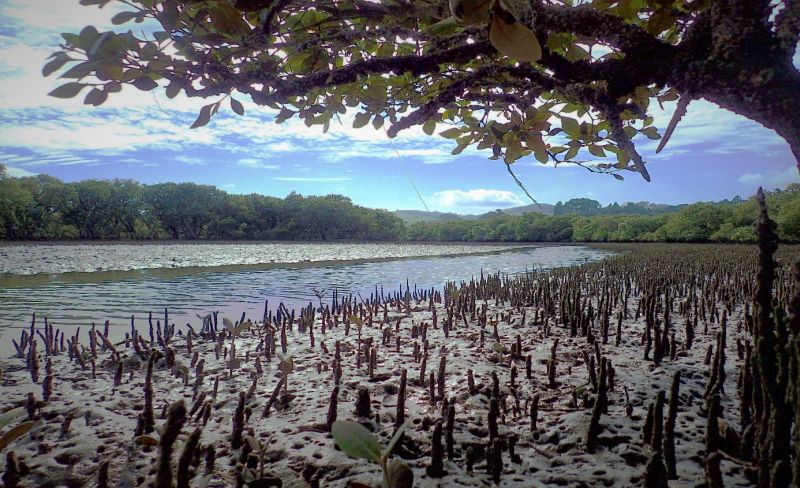E.M. Horstman1,2*, J.C. Mullarney2, K.R. Bryan2
1 University of Twente, This email address is being protected from spambots. You need JavaScript enabled to view it.
2 University of Waikato, This email address is being protected from spambots. You need JavaScript enabled to view it., This email address is being protected from spambots. You need JavaScript enabled to view it.
Introduction
Aboveground root structures are ubiquitous in mangrove forests and provide substantial drag to currents and waves propagating through these systems. Creeks can improve the hydraulic conductivity of mangrove systems, providing low-resistance conduits for the tidal prism to propagate into and out of the intertidal area. Consequently, the presence of creeks in mangroves may reduce the total attenuating capacity of the system, while improving the transport of suspended and dissolved matter. In this work we address the effect of mangrove vegetation on the tidal hydrodynamics in an ephemeral creek catchment with no terrestrial fresh water input, located in the Whitianga estuary in New Zealand.
Methods
A series of acoustic instruments was deployed throughout the creek channel and within the mangrove forest, monitoring spatial changes in the velocity profiles over a 10-day period covering spring and neap tides. Suspended sediment concentrations were monitored synoptically at part of these stations. Spatial data on the elevation, vegetation and sediment properties of the site were collected simultaneously in order to provide quantitative insight into the drivers of the observed tidal dynamics.
Results
As in previous field studies, we observed an asymmetry of the tidal currents in the mangrove creek, with up to 3x greater ebb-tidal current speeds due to a delayed discharge from the vegetated flats surrounding the creek. The tidal amplitude was also attenuated up the creek, with a significantly slower inland propagation of the low tide than the high tide.
Within-creek drag coefficients, estimated by balancing pressure gradients and (vegetation-induced) friction, were large (O(10-2)) and increased notably upon inundation of the vegetated flats as well as with distance up the creek. Agreement in the fitted parameters deteriorated for bank full stages of the creek at the mudflat in front of the mangroves, but improved for water levels exceeding the creek banks inside the mangroves.
Maximum ebb velocities in the creek were found to correlate directly with the tidal prism, whereas the maximum flood velocities correlated with the tidal prism scaled to the relative width of the channel. Maximum ebb and flood velocities were also in reasonable agreement to those predicted using a simplified momentum balance for long, shallow, non-convergent estuaries with abundant intertidal fringes. Combined, such simple approximations could reduce the need for field data when quantifying tidal transport rates, and spatial changes therein, through similar mangrove systems.

Figure 1 Low tide at the creek entrance of the mangrove-lined creek system studied in this work.










